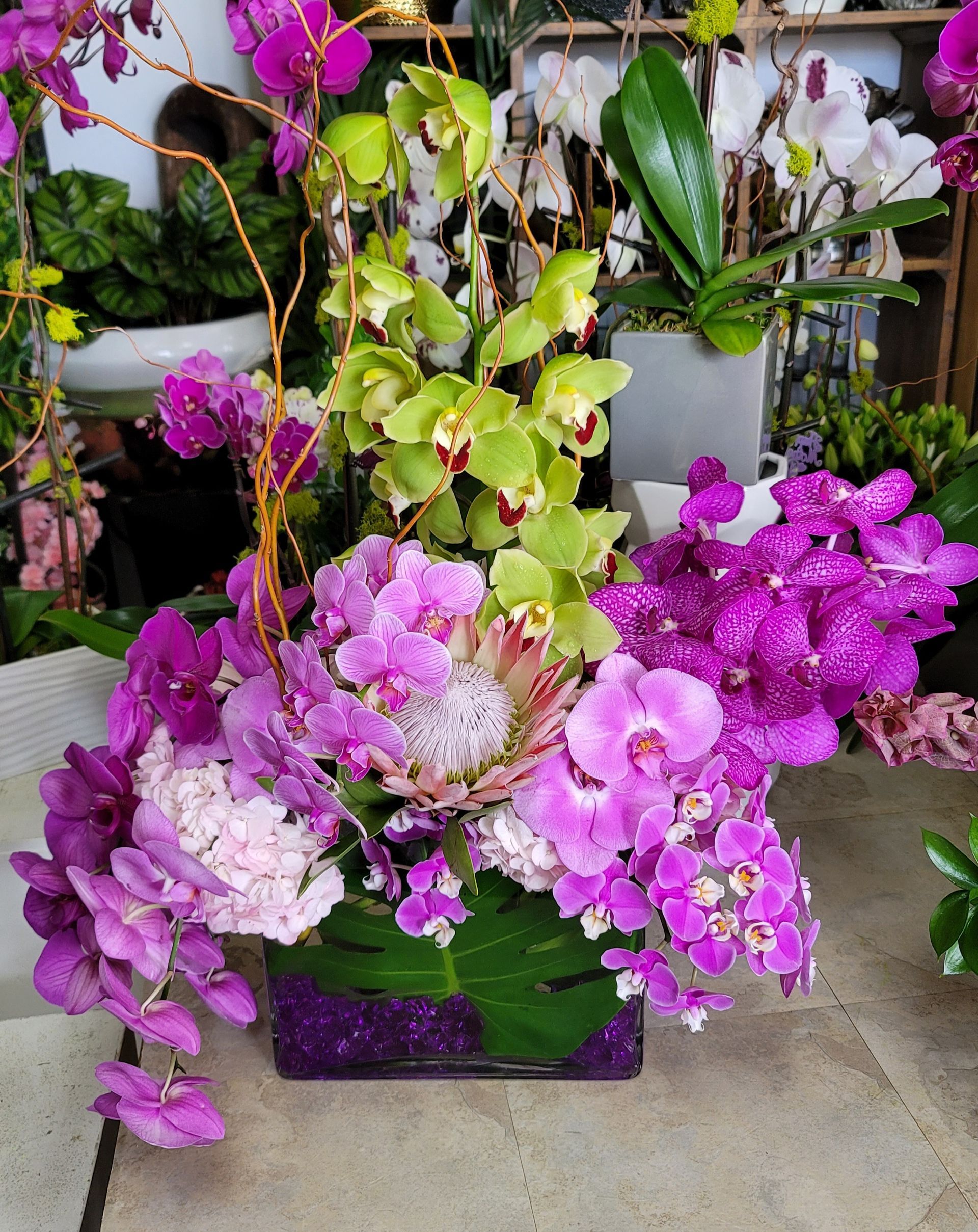Call Us Now On
Call Us Now On: (760) 776-0808
The Ultimate Guide to Watering Orchids: Tips from Dr. Orchid Floral Design
The Ultimate Guide to Watering Orchids: Tips from Dr. Orchid Floral Design
Orchids are known for their stunning beauty and elegance, but they can also be a bit tricky to care for, especially when it comes to watering. At Dr. Orchid Floral Design, we want to help you keep your orchids healthy and thriving, so we’ve put together this guide on how to water them properly.
Understanding Your Orchid's Needs
Before you start watering, it’s important to understand the specific needs of your orchid. Different species of orchids have different water requirements, but there are some general guidelines that can help you get started.
- Phalaenopsis (also known as moth orchids): These are the most common orchids and are relatively easy to care for. They prefer a consistent level of moisture but don't like to sit in water.
- Dendrobium: These orchids prefer to dry out slightly between waterings.
- Cattleya:
Known for their large, showy flowers, these orchids thrive with a bit more dryness between waterings.
How Often Should You Water?
One of the most common mistakes people make with orchids is overwatering. Orchids are epiphytes, meaning they grow on trees in their natural habitat and are used to having their roots exposed to air. Overwatering can lead to root rot, which is one of the biggest killers of orchids.
- Check the roots: Healthy orchid roots should be green or white and firm to the touch. If they look brown and mushy, you may be overwatering.
- Frequency: Water your orchid once a week during the growing season (spring and summer) and every 10-14 days during the dormant period (fall and winter). However, this can vary depending on your orchid type, potting medium, and environment.
- Humidity levels:
Orchids love humidity. If your home is dry, consider misting your orchid or placing it on a humidity tray.
The Best Way to Water Orchids
- Use tepid water: Cold water can shock your orchid’s roots. Instead, use water that is room temperature or slightly warm.
- Water in the morning: This allows any excess water to evaporate throughout the day, reducing the risk of root rot.
- Soak, don't sprinkle: Place your orchid pot in a bowl of water and let it soak for about 10-15 minutes. This allows the roots to absorb the water they need. After soaking, let the pot drain thoroughly.
Signs Your Orchid Needs Water
Your orchid will show signs if it's not getting enough water:
- Wrinkled leaves: This could indicate dehydration.
- Drooping flowers: If your orchid’s blooms are wilting prematurely, it might be thirsty.
- Dry roots: Check the roots to see if they look shriveled or silver-colored, which means they need more moisture.
Common Mistakes to Avoid
Your orchid will show signs if it's not getting enough water:
- Watering too frequently: Orchids do not like to be soggy. Make sure the roots have time to dry out slightly between waterings.
- Using hard water: Orchids prefer rainwater or distilled water. If you’re using tap water, let it sit out overnight to allow any chlorine to evaporate.
- Ignoring drainage: Ensure your orchid pot has good drainage. Waterlogged roots will quickly lead to rot.
Final Thoughts
Watering orchids may seem challenging at first, but with a little attention and care, you can keep your orchid healthy and beautiful. Remember, the key is balance—enough water to keep the roots hydrated, but not so much that they become waterlogged.
At Dr. Orchid Floral Design, we’re here to help you every step of the way in your orchid care journey. Feel free to reach out to us if you have any questions or need personalized advice on caring for your orchids!

Dr. Orchid Floral Design

